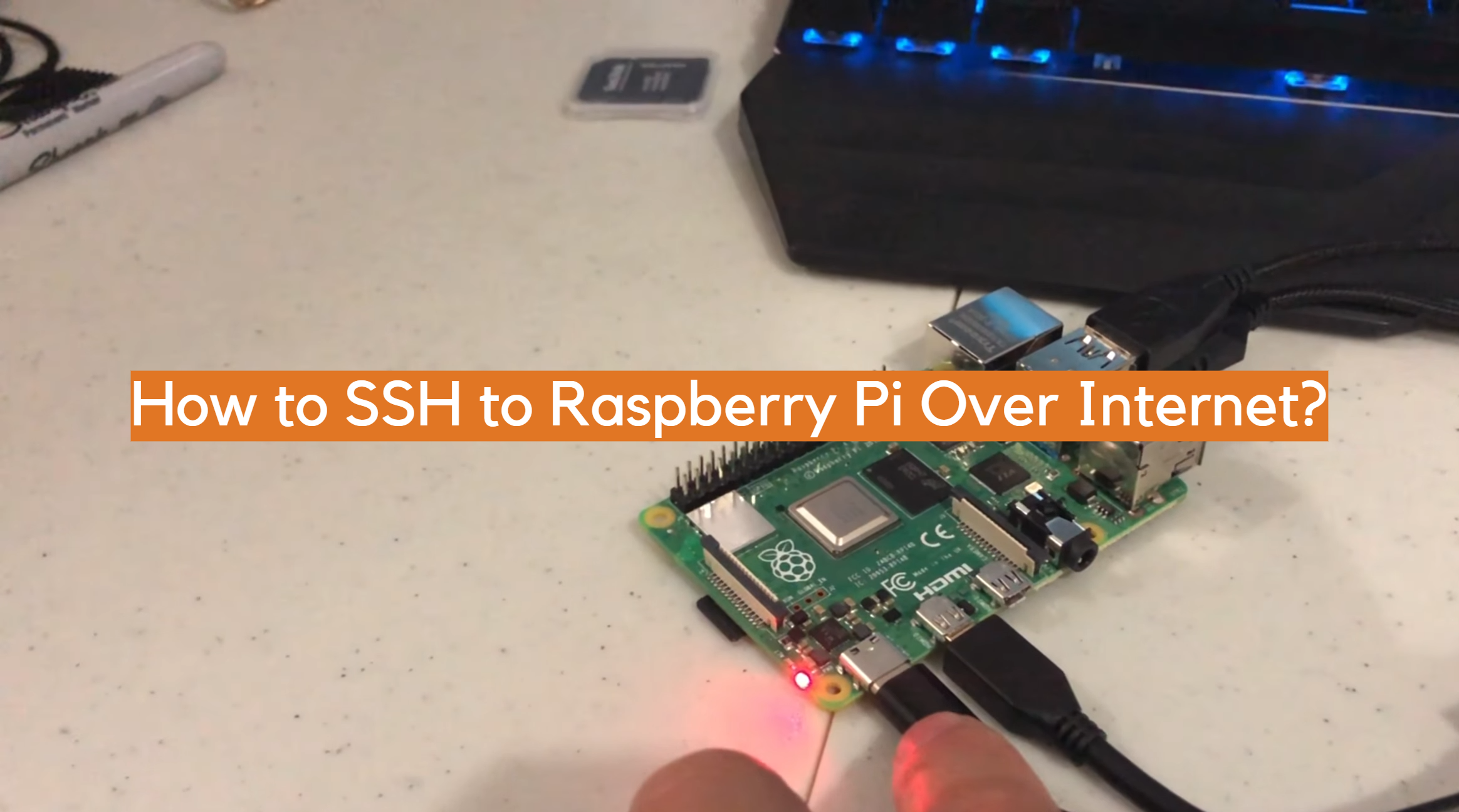So, you're here because you want to learn all about Raspberry Pi SSH from internet, right? Let's be real, this little device has taken the tech world by storm, and for good reasons. Whether you're a hobbyist or a seasoned developer, being able to access your Raspberry Pi remotely via SSH from the internet is a game-changer. Imagine controlling your home automation system or accessing your server from anywhere in the world. Sounds cool, doesn’t it? But hold up, before we dive deep into the nitty-gritty of setting this up, let me tell you why this is such a powerful feature.
Raspberry Pi SSH from internet allows you to connect to your device securely without being physically present. This means you can troubleshoot issues, manage files, or even run scripts remotely. It's like having a little assistant in your pocket that does all the heavy lifting for you. But with great power comes great responsibility, and that’s where security comes into play. We’ll cover that in detail later, but for now, just know that setting up SSH correctly is crucial.
Now, before we get started, let’s talk about why this guide is different. Unlike other tutorials out there, this one is crafted with you in mind. It’s packed with practical tips, step-by-step instructions, and expert advice to help you master Raspberry Pi SSH from internet. So, buckle up, and let’s get to it!
Read also:Astrid Wett Onlyfans Leaks The Truth Behind The Headlines
What is Raspberry Pi SSH from Internet?
Let’s break it down, shall we? SSH stands for Secure Shell, and it’s a protocol that allows you to securely connect to a remote device over an unsecured network. When we talk about Raspberry Pi SSH from internet, we’re referring to the ability to access your Raspberry Pi remotely from anywhere in the world using this protocol. Think of it as a secure tunnel that lets you communicate with your device without exposing it to potential threats.
Here’s the kicker: while SSH is super useful, setting it up to work from the internet can be a bit tricky. You’ve got firewalls, routers, and security concerns to consider. But don’t worry, we’ve got you covered. By the end of this guide, you’ll be able to set up SSH on your Raspberry Pi like a pro.
Why Should You Use Raspberry Pi SSH from Internet?
Let’s face it, convenience is key in today’s fast-paced world. With Raspberry Pi SSH from internet, you can:
- Access your device from anywhere, anytime.
- Manage files and run commands remotely.
- Monitor your home automation systems or servers.
- Perform troubleshooting without being physically present.
But wait, there’s more. Using SSH not only saves you time but also enhances security. Unlike other protocols, SSH encrypts all data transmitted between your device and the client, ensuring that your information stays safe. So, whether you’re a tech enthusiast or a professional developer, Raspberry Pi SSH from internet is a must-have skill in your arsenal.
Understanding the Basics of SSH
How Does SSH Work?
SSH works by creating a secure connection between a client and a server. In our case, the Raspberry Pi acts as the server, and your computer or mobile device acts as the client. When you connect via SSH, the protocol establishes an encrypted channel that ensures all data transmitted is secure. This means that even if someone intercepts your connection, they won’t be able to decipher the information being sent.
Here’s a quick breakdown of how SSH works:
Read also:Sophie Rain Spiderman Video Instagram The Hype The Truth And Everything Inbetween
- The client sends a request to connect to the server.
- The server responds with its public key.
- The client verifies the server’s identity using the public key.
- A secure connection is established, and communication begins.
Setting Up SSH on Your Raspberry Pi
Step-by-Step Guide
Alright, let’s get down to business. Setting up SSH on your Raspberry Pi is pretty straightforward. Here’s how you can do it:
- Boot up your Raspberry Pi and connect it to your local network.
- Open the terminal and type
sudo raspi-config. - Navigate to
Interfacing Optionsand selectSSH. - Choose
Enableand reboot your device.
Voila! SSH is now enabled on your Raspberry Pi. But hold on, we’re not done yet. To access your device from the internet, you’ll need to set up port forwarding on your router. Don’t worry, we’ll cover that in the next section.
Port Forwarding: The Key to Remote Access
What is Port Forwarding?
Port forwarding is a technique that allows you to direct incoming traffic from the internet to a specific device on your local network. In our case, we want to forward traffic on port 22 (the default SSH port) to our Raspberry Pi. This will enable us to access our device from anywhere in the world.
Here’s how you can set up port forwarding:
- Log in to your router’s admin panel.
- Locate the port forwarding section and create a new rule.
- Set the external port to 22 and the internal port to 22.
- Specify the IP address of your Raspberry Pi as the destination.
- Save the changes and restart your router.
That’s it! You’ve now set up port forwarding on your router. But remember, security is paramount, so make sure to enable a strong password on your Raspberry Pi to prevent unauthorized access.
Securing Your Raspberry Pi SSH Connection
Best Practices for Security
When it comes to Raspberry Pi SSH from internet, security should always be your top priority. Here are some best practices to keep your device safe:
- Use strong, unique passwords for your Raspberry Pi.
- Disable password authentication and use SSH keys instead.
- Change the default SSH port to something less common.
- Install a firewall to block unauthorized access.
- Regularly update your Raspberry Pi to patch any security vulnerabilities.
By following these tips, you can significantly reduce the risk of your device being compromised. Remember, security is an ongoing process, so stay vigilant and keep your system up to date.
Troubleshooting Common Issues
Why Can’t I Connect to My Raspberry Pi?
So, you’ve set everything up, but you still can’t connect to your Raspberry Pi. Don’t panic, it happens to the best of us. Here are some common issues and how to fix them:
- Check your router’s firewall settings to ensure that port forwarding is enabled.
- Verify that SSH is enabled on your Raspberry Pi by running
sudo service ssh status. - Make sure your Raspberry Pi’s IP address is correctly configured in the port forwarding rule.
- Try connecting from a different network to rule out any local network issues.
If none of these solutions work, consider resetting your router or reinstalling the SSH server on your Raspberry Pi. Sometimes, starting fresh is the best way to go.
Advanced Techniques for Raspberry Pi SSH
Using SSH Tunnels
SSH tunnels are a powerful feature that allows you to securely access other services on your Raspberry Pi. For example, you can use an SSH tunnel to access a web server running on your device from anywhere in the world. Here’s how you can set it up:
- Open a terminal and type
ssh -L 8080:localhost:80 pi@your_pi_ip. - Enter your Raspberry Pi’s password when prompted.
- Open a web browser and navigate to
http://localhost:8080.
That’s it! You’ve now set up an SSH tunnel to access your Raspberry Pi’s web server. This technique can be used for a variety of services, so get creative and explore the possibilities.
Conclusion
There you have it, folks. You’ve now learned everything you need to know about Raspberry Pi SSH from internet. From setting up SSH to securing your connection and troubleshooting common issues, this guide has covered it all. Remember, the key to mastering this skill is practice. So, go ahead and experiment with your Raspberry Pi, and don’t be afraid to make mistakes.
Before we wrap up, here’s a quick recap of what we’ve covered:
- Raspberry Pi SSH from internet allows you to access your device remotely.
- Setting up SSH involves enabling the protocol, configuring port forwarding, and securing your connection.
- Best practices for security include using strong passwords, disabling password authentication, and installing a firewall.
- Troubleshooting common issues involves checking your router’s settings, verifying SSH status, and testing from different networks.
Now, it’s your turn. Take what you’ve learned and put it into action. And don’t forget to share this guide with your friends and fellow tech enthusiasts. Together, let’s make the world a more connected place. Happy hacking!
Table of Contents
- What is Raspberry Pi SSH from Internet?
- Why Should You Use Raspberry Pi SSH from Internet?
- Understanding the Basics of SSH
- Setting Up SSH on Your Raspberry Pi
- Port Forwarding: The Key to Remote Access
- Securing Your Raspberry Pi SSH Connection
- Troubleshooting Common Issues
- Advanced Techniques for Raspberry Pi SSH
- Conclusion


